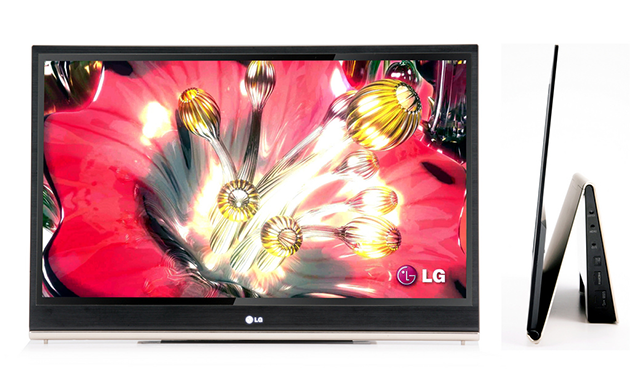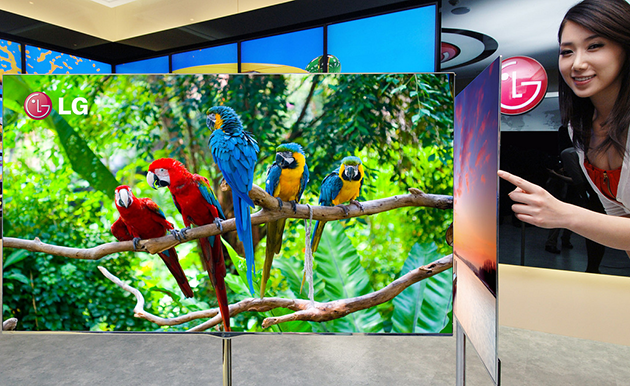 Recently, there has been a rumor that the performance and quality of Quantum Dot (QD) display and OLED display are not that different. To prove it wrong, LG Display has prepared an explanation to why OLED, the best of all display technology today, is superior to QD, which is based on LCD technology.
Recently, there has been a rumor that the performance and quality of Quantum Dot (QD) display and OLED display are not that different. To prove it wrong, LG Display has prepared an explanation to why OLED, the best of all display technology today, is superior to QD, which is based on LCD technology.
Quantum Dot Technology
Quantum Dot is a nanocrystal sphere made of semiconductor materials. With electricity, it emits light or releases light by absorbing light. Depending on the size of the dot, the wavelengths of the absorbed light vary. For instance, a quantum dot with a size of 2nm absorbs a red light that has a longer wavelength (780nm) and emits blue light, and an 8nm quantum dot absorbs blue light to emit red light.
Since LCD cannot emit light itself, it needs a light source such as the backlight. LCD with LED backlight used RGB colors – Red, Green, and Blue – to produce white. However, recently, LED LCD uses blue LEDs, coated with a yellow phosphor, to create white light.
QD TV is an improved version of this. Instead of using blue LED with yellow phosphor, it uses QD particles to create white. Quantum Dot absorbs blue light and transfers it to red and green to create white color. Through this process, it can produce accurate colors.
Difference between OLED and QD
OLED(Organic Light-emitting Diode) display is a display comprised of organic compound which emits light in response to an electric current. Each pixel can emit light itself, so it does not have a problem of light from the backlight leaking through the display. Hence, OLED is very different from QD.
The Specs of LCD TV, QD TV, and OLED TV
Source: LG Electronics |
||||||||||||||||||||||||||
 Backlight
Backlight
The crucial difference between LCD based QD TV and OLED TV is whether or not a TV needs a backlight. While QD TV enhances the backlight of the LCD TV, OLED TV is structured with a TFT substrate and organic diodes without a backlight. As a result, OLED TV is much thinner and lighter than a QD TV.
OLED TV
Definition
A good definition depends on many factors such as the display size, bezel width, brightness, contrast ratio, color gamut, and response speed.
QD's color gamut is 125%, which is greater than that of OLED TV (108%), so it may show more accurate colors. However, in low temperature environment, the color gamut may fall sharply, and in a dark environment, the color gamut is not as good as OLED's.
Also, OLED display has a respond time that is less than 0.001 milliseconds, which is about 1,000 times faster than a LCD, eliminating the blur problems. It also has a contrast ratio that is almost 10,0000:1. Furthermore, its color gamut range is greater and more accurate than LCD, which enables expression of outstanding definition.
LG OLED TV
Price
For LCD TV, 70% of the production cost is from the materials. On the other hand, the cost for LCD, the cost goes down because it does not need backlight unit, color filter, polarized film, etc. This is a potential advantage in terms of cost. Right now, the market for OLED is relatively small and the demand is low, so the consumer price is relatively high. Thus, QD is more competitive than OLED in terms of price. However, the market size for OLED is increasing very rapidly, and as LG Display has started operating a new production line (E4 line) in Korea, the production cost is reduced and the price is expected to be stabilized. Within one or two years, it is expected that the consumer price for OLED will be competitive.
 Next Generation Display
Next Generation Display
QD technology is LCD based, so it is quite difficult to consider it as a next generation display. Particularly, the technological difficulty is low, so it is a technology that can be created not just in Korean but also in Chinese and Taiwanese companies. Hence, even if a company launches the product first, it is difficult to get the first-mover advantage.
OLED TV
However, OLED is a display technology that is most suitable for creating flexible, transparent, and roll-able future displays. OLED's processing temperature is relatively low, so it is possible to use a plastic substrate instead of a glass one, which is good for creating a flexible display. Furthermore, since it does not need a backlight, compared to other displays, it is most optimized to create a transparent display.
In fact, OLED technology is the technology that is so much advanced that it should not be compared to an LCD based QD. Hence, even though LG already has the technology to create QD, it is focusing on developing OLED.
This is a comparison between a QD and an OLED technology. QD display is basically an upgraded version of an LCD display. Thus, it is difficult to consider it as a next generation display, since it still has the disadvantages the ordinary LCD TV has. In CES 2015, LG Display is planning to exhibit OLED TV as well as the QD TV. Also, in Korea, there will be a trial session for OLED and QD, during which people can compare the qualities for the two TVs, to show that OLED TV is much superior.
www.lgdisplay.com